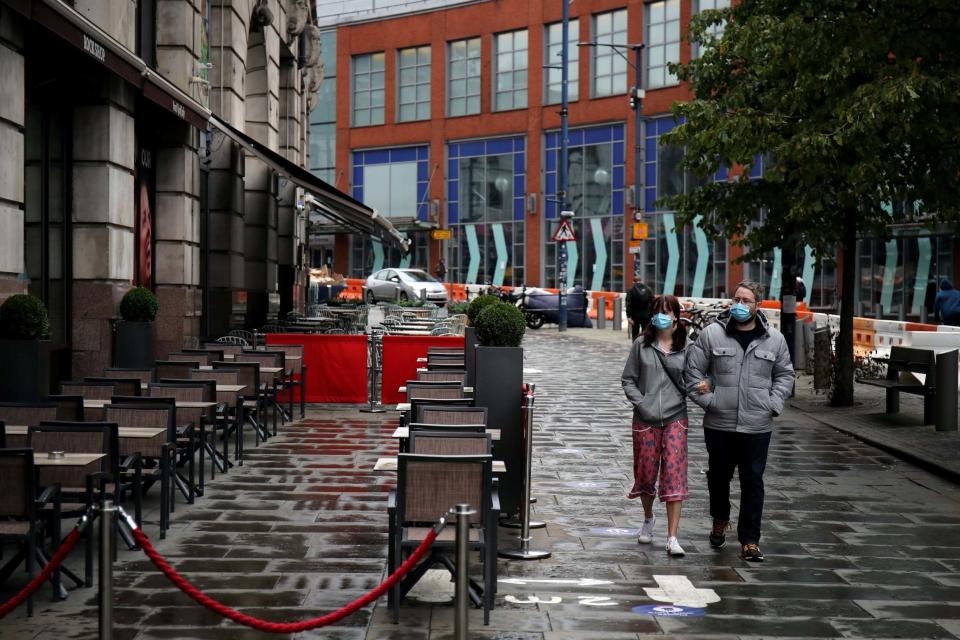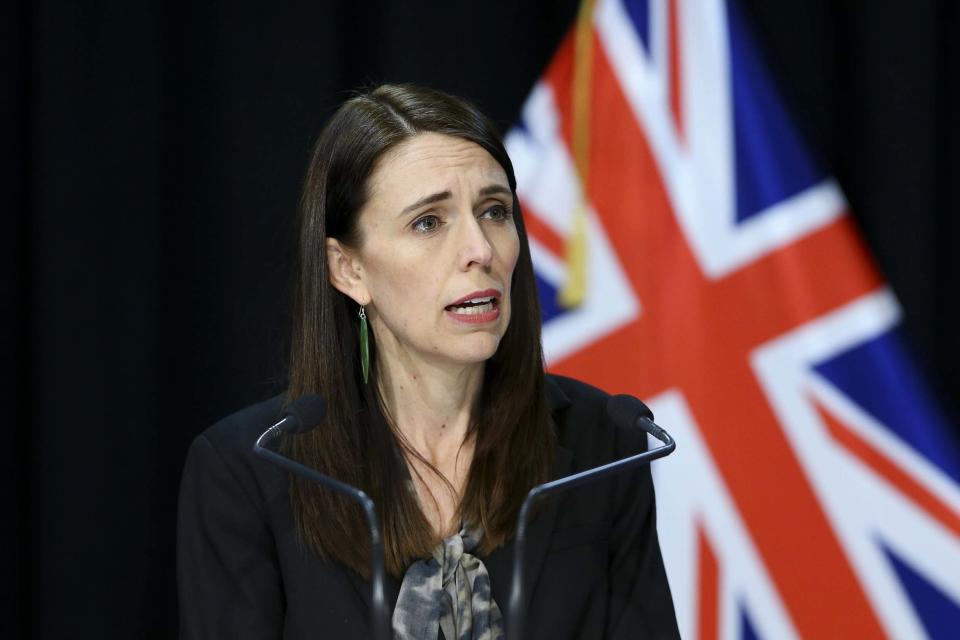What is a circuit breaker lockdown, will it happen during half term and have they worked elsewhere?
Watch: How have circuit-breakers worked elsewhere?
Pressure is mounting on Boris Johnson to introduce a so-called "circuit breaker" lockdown for the UK.
The Government brought in a three-tier local lockdown system, which came into force on Wednesday, which it hopes will curb the spread of coronavirus.
Local alert levels - "medium", "high" and "very high" - have been implemented in different areas depending on infection rates.
But some - including scientists, MPs and Labour leader Keir Starmer - are calling for more intensive national lockdown, including the option of a short-term shutdown.

Here we take a look at the debate around a circuit breaker lockdown and how it worked in other countries:
What is a circuit breaker?
A circuit breaker is a national lockdown set for short-term period of two or three weeks, where tighter restrictions are brought in.
It is designed to break the trajectory of rising coronavirus cases.
In the UK, the suggestion has been that schools and workplaces would remain open - unlike the spring lockdown - but that the hospitality sector would shut.
Scientists advising the Government have said that a circuit breaker lockdown could save thousands of lives by the end of the year.
A paper by members of the Scientific Advisory Group for Emergencies (Sage) reportedly calculates that more than 7,000 lives could be saved if schools are closed and people are ordered to stay at home from October 24 for two weeks.

The Times said the modelling suggested that coronavirus deaths for the rest of the year could be reduced from 19,900 to 12,100, with hospital admissions cut from 132,400 to 66,500. If schools and shops remained open, the death toll could be cut to 15,600, it reported.
But many have argued that the country cannot afford another national lockdown as the economy has been crippled by the crisis.
Will a circuit breaker be introduced over half-term?
Reports emerged in September that the Government were considering introducing a circuit breaker for two weeks over half-term, which begins on October 26 this year.
Downing Street is understood to be keeping the idea on the table and Boris Johnson is facing increasing pressure to introduce the short-term measure.
But Work and Pensions Secretary Therese Coffey said on Wednesday that she does not think a nationwide lockdown will happen anytime soon.
Watch: Minister dismisses national lockdown claims
She told Sky News: "I do not believe that the Prime Minister wants to set off on a national lockdown, but as ever he is advised by scientists and takes that decision in the round and tries and understands and he then set out the strategy of national framework and local measures."
When pressed further about whether the UK will enter into a national lockdown in the next two weeks, Ms Coffey added: "This will continue to be a decision that the Prime Minister will lead on in order to make that judgement.
"So far we have the three tiers and we need to make sure we give that the chance to work."
What is the latests in the ongoing row about a circuit breaker?
On Tuesday, Sir Keir Starmer called for a two to three-week national lockdown, accusing the Prime Minister of “no longer following the scientific advice”.
The Labour leader’s intervention came after it emerged Boris Johnson dismissed a recommendation for the measure from Government scientists three weeks ago
The Sage document, dated September 21 and released just hours after the Prime Minister announced his three-tier system of alert levels for England, said a package of interventions would be needed to reverse the exponential rise in cases
Top of the list was a circuit breaker “to return incidence to low levels”, followed by advice to work from home for all those that can.
Rachel Reeves, Labour’s shadow chancellor to the Duchy of Lancaster, said it was a “mistake” by the Government not to follow Sage’s recommendation last month for a short national lockdown.
Speaking to BBC Radio 4’s Today programme, she said: “We’ve always tried… to be a constructive Opposition but we think the Government have got it wrong this time.
“The mantra used to be that they were following the science – that no longer seems to be the strategy of the Government and that is a mistake."
Which countries have introduced circuit breakers and how did they work?
Singapore, Israel and New Zealand. have all tried out a circuit breaker to stem a rise in cases.
In Singapore, Prime Minister Lee Hsien Loong announced the circuit-breaker in early April, forcing non-essential workplaces to close, schools to move to home-learning and businesses selling food were only able to offer take-away services.
The circuit-breaker was due to last for a month, with Mr Lee saying: “We have decided that instead of tightening incrementally over the next few weeks, we should make a decisive move now to pre-empt escalating infections.”
Cases in the country continued to rise, peaking at 1,426 new cases on April 20, and the circuit breaker was extended until June 1.
After it was lifted, the prime minister said the measures would not stop the outbreak in the country.
Many of the cases post circuit breaker have been found among migrant workers living in dormitories, with a spike in cases in August. The government said there were no new locally acquired cases on Tuesday.
The period of the circuit breaker coincided with a 13.2 per cent contraction of GDP on a year-on-year basis, with the Ministry of Trade and Industry adding: “The fall in GDP was due to the Circuit Breaker (CB) measures implemented from 7 April to 1 June 2020 to slow the spread of Covid-19 in Singapore, as well as weak external demand amidst a global economic downturn caused by the Covid-19 pandemic.”
Meanwhile, Israel is expected to emerge from a national lockdown this week after attempting a traffic light-style system – similar to England’s tiers plan – where areas with high infection rates faced the harshest measures.
The country, which had one of the highest infection rates per capita, introduced the measures over the High Holidays of Rosh Hashanah or a three-week period.
Starting on September 13, people could not travel further than 500 metres from their home unless for essential activities, there were closures of non-essential stores, hotels and restaurants and a limit of 10 on gatherings.
More severe measures came in just over a week later, including the forced closure of synagogues except for during Yom Kippur. The measures were expected to be lifted on October 10, but were extended for another week.
In a statement on Sunday, Prime Minister Benjamin Netanyahu said: “There are preliminary signs of success. However, we need another few days to evaluate this. The exit will also be gradual, responsible and cautious.”
Infection rates in Israel increased during the lockdown according to Johns Hopkins University figures – from 4,764 new cases on September 14 to more than 11,000 on September 23. The most recent figures show 3,538 new cases for October 12.
New Zealand's Prime Minister Jacinda Ardern put the country into Covid-19 Alert Level 4 – or a national lockdown – at midnight on March 26. An emergency alert was sent to New Zealanders saying “where you stay tonight is where you must stay from now on” and “you must only be in physical contact with those you are living with.”

The measures saw non-essential services, such as bars and restaurants closed, while supermarkets were allowed to remain open.
The Alert Level 4 ended on April 27, a week longer than expected.
Ms Ardern said: “We considered that the longer we are in lockdown, the less likely it is we will need to go back. We also considered moving alert levels on April 23, which is in just 48 hours’ time.
“The sacrifice made to date has been huge, and Cabinet wanted to make sure we lock in our gains, and give ourselves some additional certainty.”
On April 18, New Zealand recorded 13 new cases but did not have another day in double digits until August 12.
Watch: How will England's three-tier local lockdown system work?
Read more
Pressure grows on Pearson over pay row, while sales steady
What Covid Tier is London in and what are the restrictions?
Doctors slam 'disgusting' scenes in Liverpool ahead of new curbs
New three-tier system comes into force as London put on 'medium risk'

 Yahoo Movies
Yahoo Movies 
